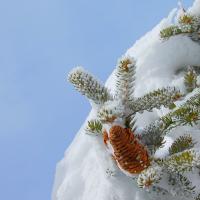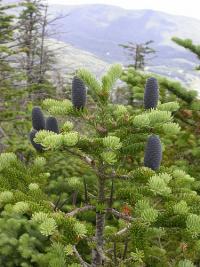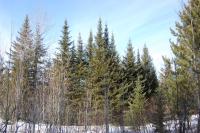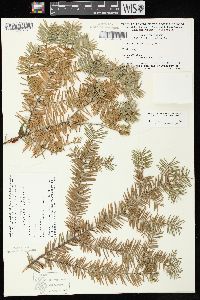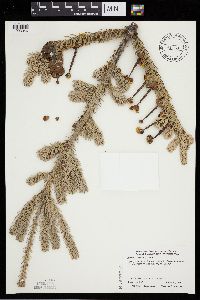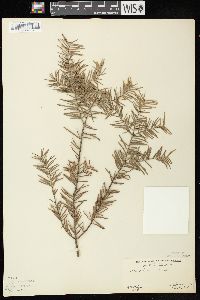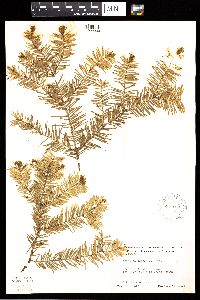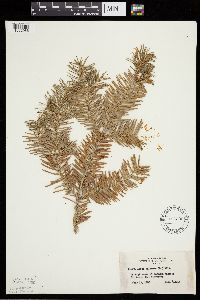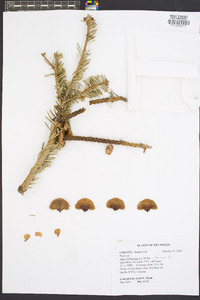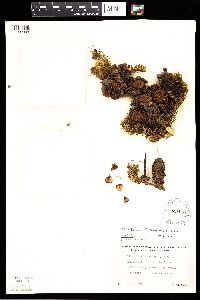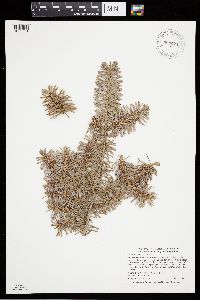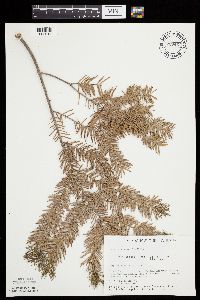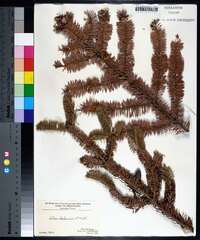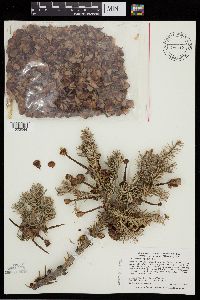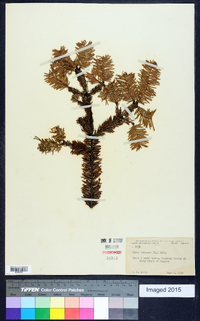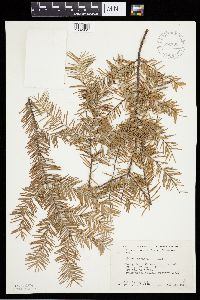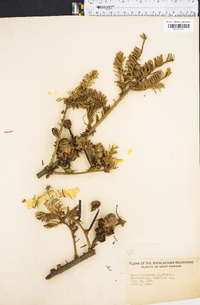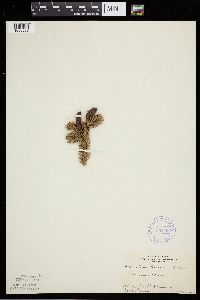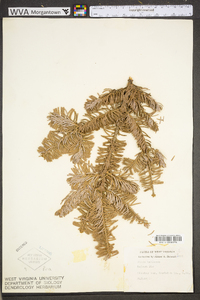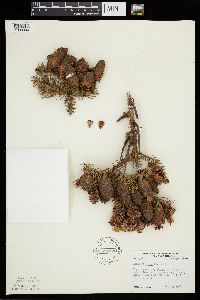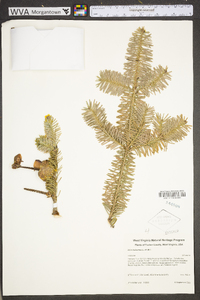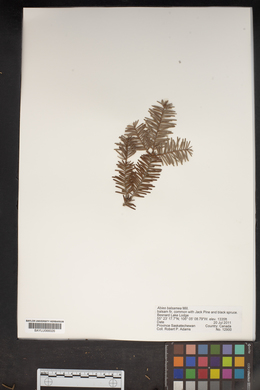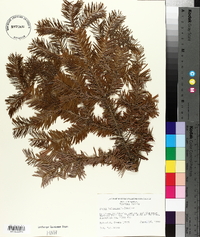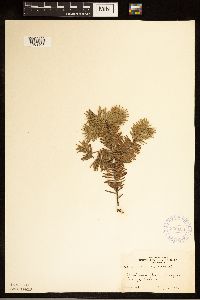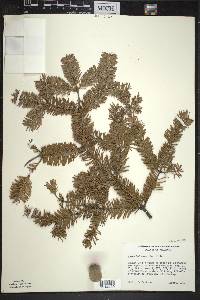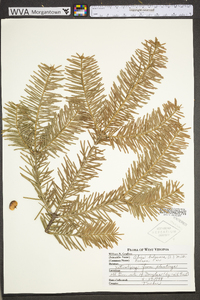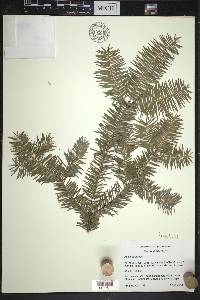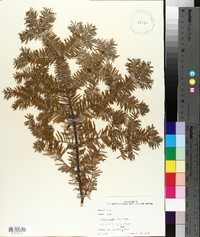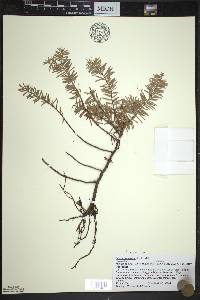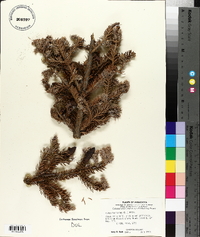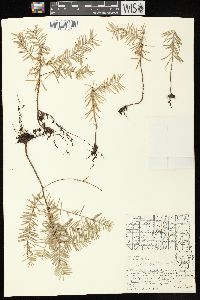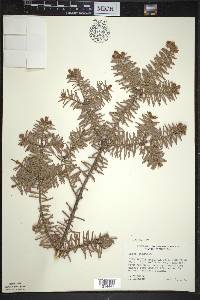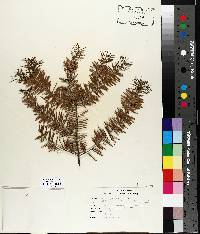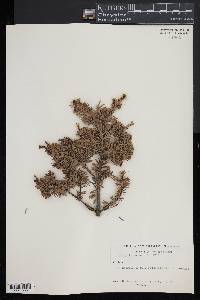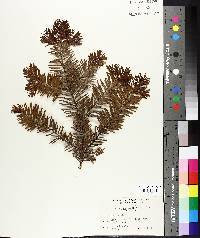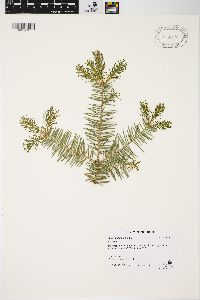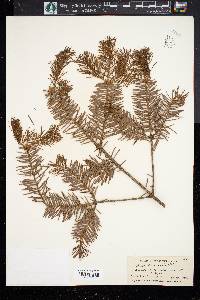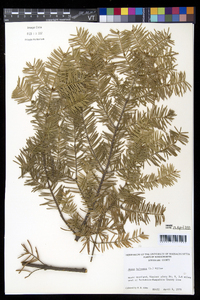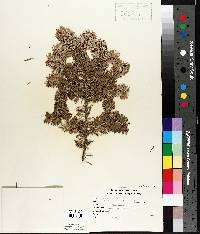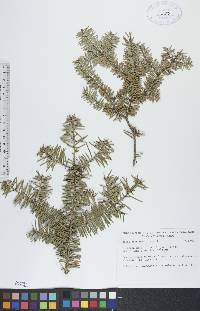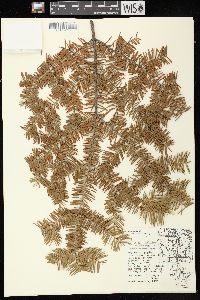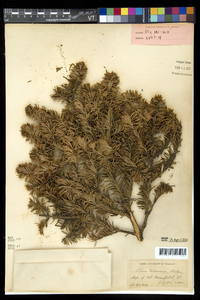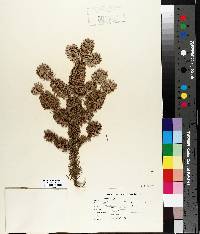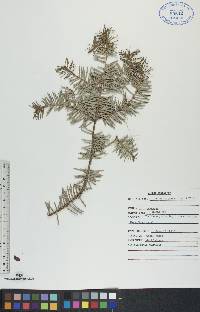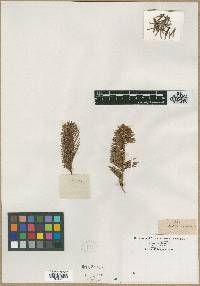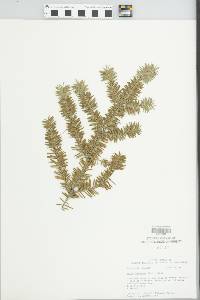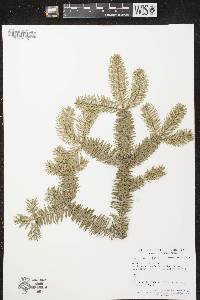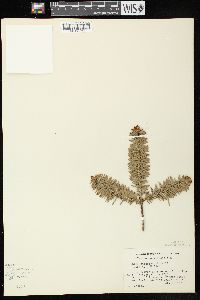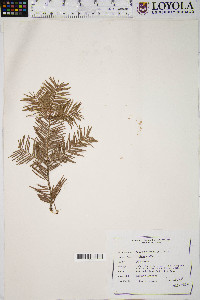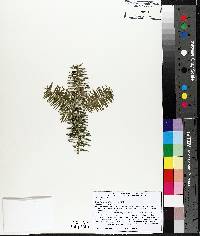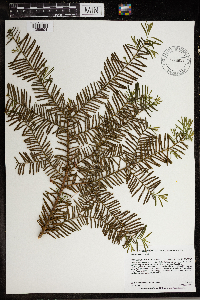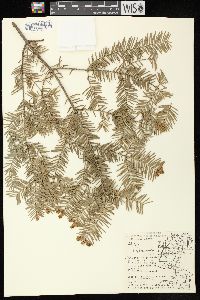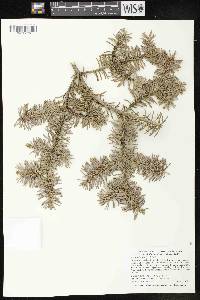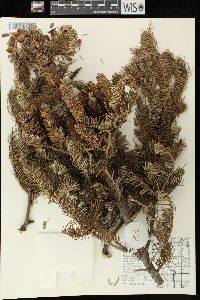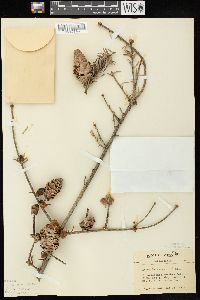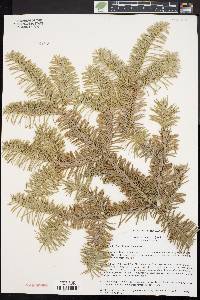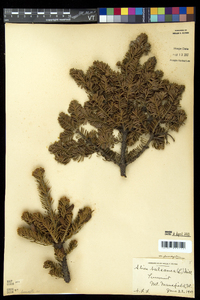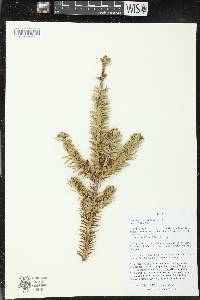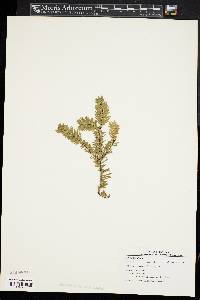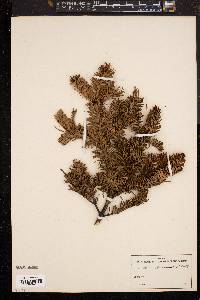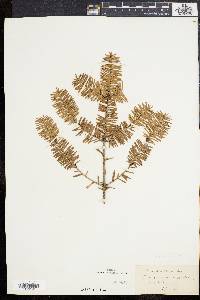
|
|
|
|
Family: Pinaceae
Balsam Fir
[Abies balsamifera] |
Trees to 23m; trunk to 0.6m diam.; crown spirelike. Bark gray, thin, smooth, in age often becoming broken into irregular brownish scales. Branches diverging from trunk at right angles, the lower often spreading and drooping; twigs mostly opposite, greenish brown, pubescence sparse. Buds hidden by leaves or exposed, brown, conic, small, resinous, apex acute; basal scales short, broad, nearly equilaterally triangular, glabrous, resinous, margins entire, apex sharp-pointed. Leaves 1.2--2.5cm ´ 1.5--2mm, 1-ranked (particularly on lower branches) to spiraled, flexible; cross section flat, grooved adaxially; odor pinelike (copious ß-pinene); abaxial surface with (4--)6--7(--8) stomatal rows on each side of midrib; adaxial surface dark green, slightly or not glaucous, with 0--3 stomatal rows at midleaf, these more numerous toward leaf apex; apex slightly notched to rounded; resin canals large, ± median, away from margins, midway between abaxial and adaxial epidermal layers. Pollen cones at pollination red, purplish, bluish, greenish, or orange. Seed cones cylindric, 4--7 ´ 1.5--3cm, gray-purple, turning brown before scale shed, sessile, apex round to obtuse; scales ca. 1--l.5 ´ 0.7--1.7cm (relationship reversed in more western collections), pubescent; bracts included or exserted and reflexed over scales. Seeds 3--6 ´ 2--3mm, body brown; wing about twice as long as body, brown-purple; cotyledons ca. 4. 2 n =24. Boreal and northern forests; 0--1700m; St. Pierre and Miquelon; Alta., Man., N.B., Nfld., N.S., Ont., P.E.I., Que., Sask.; Conn., Iowa, Maine, Mass., Mich., Minn., N.H., N.Y., Pa., Vt., Va., W.Va., Wis. Balsam fir is frequently segregated into two varieties (e.g., H.J. Scoggan 1978--1979) based on whether the bracts are included (var. balsamea ) or exserted (var. phanerolepis Fernald), the latter considered by Liu T. S. (1971) to be a hybrid between Abies balsamea and A . fraseri . D.T. Lester (1968) demonstrated, however, that bract length may vary within a cone, annually, and from tree to tree. Nevertheless, a tendency exists for the exserted variety to be found most commonly from Newfoundland south through New England (R.C. Hosie 1969; B.F. Jacobs et al. 1984); it is not found west of Ontario. Western populations lack 3-carene and have other minor chemical differences separating them from eastern balsam fir (E.Zavarin and K.Snajberk 1972; R.S. Hunt and E.von Rudloff 1974). Morphologic variation in balsam fir has been studied mainly east of Ontario; the populations to the west have been ignored for the most part, although they may yield stronger evidence for species subdivision. In Alberta, populations intermediate between western Abies balsamea and A . bifolia (E.H. Moss 1953; R.S. Hunt and E.von Rudloff 1974, 1979) may be classified as A . balsamea ´ bifolia . In West Virginia and Virginia, populations of balsam fir tend to be more similar to A . fraseri than are more northern populations (B.F. Jacobs et al. 1984). Balsam fir ( Abies balsamea ) is the provincial tree of New Brunswick.
Spire-topped tree to 25 m, the gray bark eventually becoming scaly; twigs minutely hairy; lvs 12-25 mm; blunt or minutely notched, twisted at the base and tending to lie in one plane; cones 5-10 cm, with broadly rounded, appressed scales; bracts stipitate, the blade quadrate to rotund, mucronate to aristate, included or occasionally shortly exserted, but only rarely exceeding the subtended scale, the exserted part, when present, sometimes spreading, but not reflexed. Moist woods and swamps; Nf. and Lab. to the Mackenzie Valley, s. to N.Y., Mich., Minn., and in the mts. to W.Va. and n. Va. Gleason, Henry A. & Cronquist, Arthur J. 1991. Manual of vascular plants of northeastern United States and adjacent Canada. lxxv + 910 pp. ©The New York Botanical Garden. All rights reserved. Used by permission. |
This project was made possible in part by the Institute of Museum and Library Services [MG-70-19-0057-19].
Powered by Symbiota


